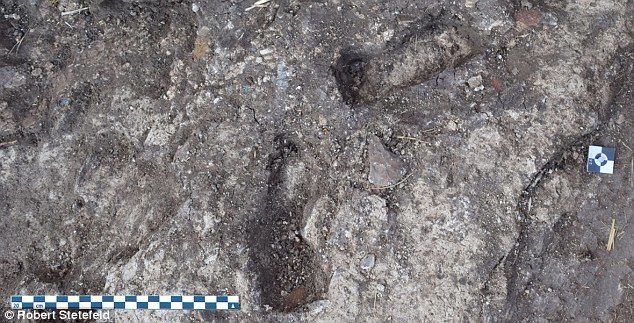
They also uncovered mysterious rare wall painting fragments which may have come from Ancient Greece. The team made the find while working at a site of Qantir-Piramesse at the eastern side of Egypt's Nile Delta.
Between 1300 and 1100 BC, 'Pi-Ramesse' was the capital of Egypt and a rich and powerful city. It was the home of Pharaoh Ramesses the Great, who was king of Egypt from 1279 to 1213 BC.
Additional images
'The accounts that we have suggest that the whole area covered by the city would have been between 10 and 15 square km (4-6 square miles),' Dr Henning Franzmeier, field director of the Qantir-Piramesse project, told IBTimes UK.
'This would have made this city one of the biggest in the Mediterranean if not the world in the late Bronze Age.'
No temple or palace remains can be found at the surface today, but the archaelogists, based at the Roemer-Pelizaeus-Museum Hildesheim in Germany, have been excavating the historic site for 35 years.
The team hope to learn more about the site's rich history and with three decades of study under their belts their work has yielded some interesting discoveries.
'We are hoping to find larger parts of the city, identifying more important buildings and institutions such as temples and the royal palace of kings such as Ramesses II (Ramesses the great),' Dr Franzmeier told MailOnline.
'Who the kids were is pure speculation,' Dr Franzmeier told MailOnline.
'We were actually very puzzled as they seem to have been too small for kids that were already working.
'Would royal kids have played in the mud and mortar? This is actually hard to imagine from my point of view.'
The pit also contained broken pieces of painted wall plaster.
The team are yet to analyse the fragments' motifs but they speculate that the remains came from large-scale multi-coloured wall paintings.
The archaeologists head back to the site next Autumn where they hope to identity all of the fragments in the mortar pit and reconstruct the painting's motifs.
The fragments are of particular interest because they appear to be made of hard plaster.
'In general wall paintings on hard plaster are really rare in Egypt - the technique actually might point to some kind of connection to Myceanean Greece,' Dr Franzmeimer told MailOnline.
'We will return with some specialists in our team who will conduct more research on the fragments and we also hope to find more so we can finally see what was depicted.'
What Happened to Pi-Ramesse?
Pi-Ramesse in an ancient Egyptian city founded by Pharaoh Ramesses II in the 13th century BC.
The city was built on the banks of the Pelusiac branch of the Nile and had a population of over 300,000, making it one of the largest ancient Egyptian cities.
Pi-Ramesses flourished for more than a century after Ramesses' death, and poems were written about its splendour.
But the Nile branch which ran along the city silted up in the 11th century BC, starving it of access to key trade and transport routes.
The capital was subsequently moved to Tanis about 30 km north of Pi-Ramesse.
In the following centuries the temples and buildings were used as a quarry and the stones were re-used at Tanis and other sites.
Thus Pi-Ramesse almost completely vanished and today on the surface almost nothing is visible anymore.
Dr Franzmeimer and his team have previously conducted magnetic measurements between 1996 and 2012 to uncover the layout of the ancient city.
The magnetic measurements allow the researchers to detect the remains of buildings buried beneath the Earth.
This is because the mud-brick slabs used to build them have a different magnetic signature to the soil around them.
The signatures were used to identify parts of walls and 'monumental remains,' which date back to the Ramesses II era almost three millennia ago.
The remains could be the remnants of a construction site used to renovate an ancient palace or temple complex, the researchers say.
'The whole site dates back to 1300 and 1100BC, but pottery fragments indicate that this particular building might have been built between 1300 and 1200BC,' Dr Franzmeier said.
'Our thought is that it would have been contemporary to Ramesses II, or to just a bit later.'



Reader Comments